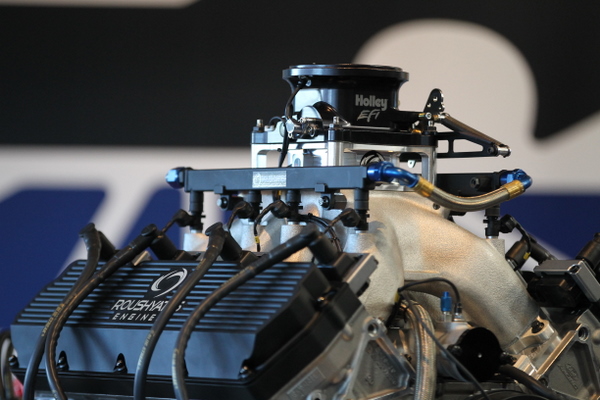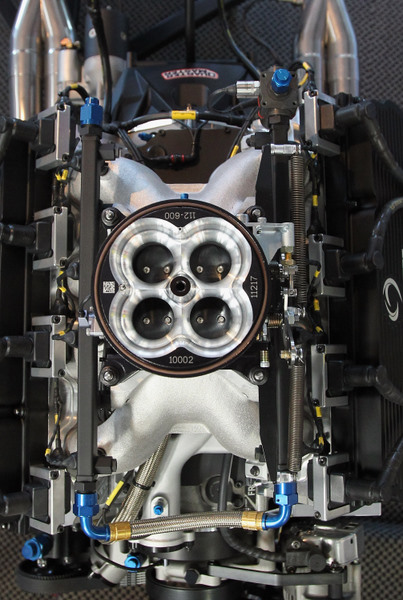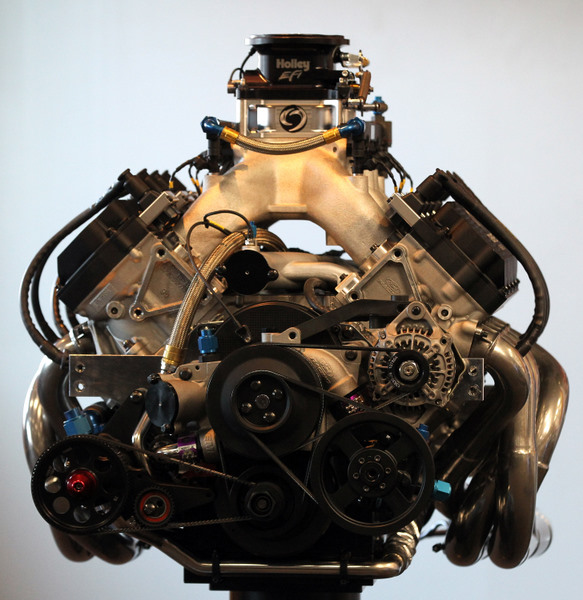Busch: NASCAR Fuel injection still unreliable
Tony Stewart, Joey Logano and Mark Martin are all big name drivers who have had major issues with the new EFI systems during the opening weeks of the Sprint Cup season.
But some are worried about the bigger picture here – that NASCAR executives are leaving it up to teams themselves to deal with McLaren engineers over EFI problems.
Usually NASCAR itself wields a heavy hand with this sport's suppliers, making them toe the line.
However it appears to some here that NASCAR simply doesn't the expertise or engineers savvy enough to get a hand on EFI.
Another point: NASCAR, when introducing new technology (like the sealed gas refueling systems), usually brings it in at a lower level, on the Truck tour or Nationwide tour, to work out the bugs before bringing it into the Sprint Cup realm.
However, Toyota's Lee White points out that EFI is not only good for the sport, in the marketing sense, but that the new system has the capability of almost repairing a damaged engine….or at least protect a damaged engine from blowing up.
"Look at Denny Hamlin in the Shootout at Daytona," White says. "He was involved in that second-lap incident, and it banged up his car, and the water temp from there on was up to 310-312….and the engine didn't blow up. If that had been a carburetor-engine, it would have blown up big-time. But the EFI mapping can be set to take into account various possibilities and adapt the engine to them, like putting more fuel on the piston."
 |
| EFI: NASCAR's new electronic fuel injection system |
| Getty Images for NASCAR |
White, who worked with EFI engines in sports cars during his years with Jack Roush, says that as good as McLaren engineers are, they simply aren't familiar with the physical demands on an EFI unit in a NASCAR stocker – all the banging that these drivers dish out, for four or five hours.
There is, White says, a lot for everyone to learn with this EFI. Like at Martinsville a few weeks back, during an EFI test, on a cold day, the engines simply wouldn't crank, because it was too cold. All the dyno room work on EFI systems hadn't taken into account the weather, because there is no weather in a dyno room.
"I'm not the expert," White says, "but apparently when you take power away from the 'box,' and then come back with power, it might screw up the cam sensor, which kills the timing of everything.
"And it has to re-sync.
"And in the process of doing that, there is a situation – which everyone at the moment is working around – that when you kill the engine and then try to jump start it with the clutch, the engine is cranking much faster than when it cranks when you just push the (start) button.
"So it doesn't recognize that, and it doesn't go into start mode, and it just doesn't start.
"You're better off, then, pushing the button.
"But at the same time, when the driver does that, he's not turning off all the electrical accessories, like the blowers, and that runs the battery down.
 |
| A top view of a NASCAR engine with the new fuel injection system |
| Getty Images for NASCAR |
"And believe me, with the fuel pressure required with these things now (75 psi), you have got to have good battery. That is critical.
"There is so much battery requirement in these cars now; everyone has upped their alternators, to 100 amps, and even cooling their alternators.
"But we've seen guys here this weekend where in practice they'll come in the garage and their batteries are down to under 10 volts. And once you get under 10 volts with this system, you can't make the 75 psi fuel pressure to make 'em run."
So where's the blame in all this?
After all, snafus like Stewart, Logano and Martin have encountered could wind up costing someone a spot in the playoffs….or a shot at the championship, if the issues aren't worked out.
White insists "You certainly can't blame McLaren; they're just one part of this. And you can't blame Freescale; it's just making the chip in the ecu.
"The issues we've seen so far have nothing to do with the ecu (electronic control unit). They have to do with hundreds of feet of wires, dozen of connectors, sensors.
"This relay box, the issue with the relays popping – that's a whole different manufacturer. That was what was biting people at Daytona. But we didn't see that issue raising its head last week at Phoenix, so everybody got on it pretty darned quick. At least a Band-Aid on it.
"In my opinion, it will probably till May or June before we get all these little issues sorted out.
"There's no way in heaven you could uncover all these issues in just testing…because you're not running 500 miles with all the beating and banging, and the heat coming from the exhausts. I'm telling you, a car cranking 850 horsepower, just six inches off your door, it'll rattle your cage."
 |
| And a front view of the engine with EFI |
| Getty Images for NASCAR |
No one has ever tried EFI in an environment like NASCAR. And the people dealing with EFI are in a new world too.
"The real challenge here is the installation in this environment," White says. "McLaren has a lot of really smart guys….but with software. Not one of them has ever leaned over a hot motor to check a connector or relay box. That's up to the teams."
And White concedes that during all this on-track development, some teams and drivers will just have to suffer: "There is a period of time where it's going to have an effect. I'm sorry – it's new.
"But EFI makes these cars more relevant to the people in the stands, and that means it's good for you and good for me and good for business. Tell NASCAR they're doing a heck of a job." Mike Mulhern
03/10/12 Fuel injection has been around for decades, but NASCAR still can't get it right. Kyle Busch has voiced his concern over issues with the new fuel Injection system recently implemented in the NASCAR Sprint Cup Series.
During last week’s race at Phoenix Tony Stewart’s car failed to quickly re-fire after the current Cup champion shut the engine off during the race in order to save fuel in the closing stages. He eventually finished 22nd and two laps down due to a lengthy stoppage in the pits.
Some drivers have experienced similar fire-up problems in practice and races, which makes Busch believe the issue related to the new system and not to a specific manufacturer, the Joe Gibbs Racing driver saying his team-mate Joey Logano had the same problem as Stewart at Daytona.
“I’m sure that all the computer technicians that we all have on our teams now are working through the diagnostics of how to fix that and what to do," said Busch. “It’s certainly an issue that has arisen that we’re all aware of and we all have to work through it as best we can and figure out the solution to the problem.
“Whether that solution is this week or whether its not ’til May or not ’til the end of the year, I don’t know, but certainly those guys are working through all the different scenarios as best they can."
He added: “Those guys are working on all that stuff trying to make it where we can do what we need to do the same as what we did with a carburetor, but so far it’s showing me that the mechanics of a carburetor seem to be smarter than a computer. We’ll learn through it all."
